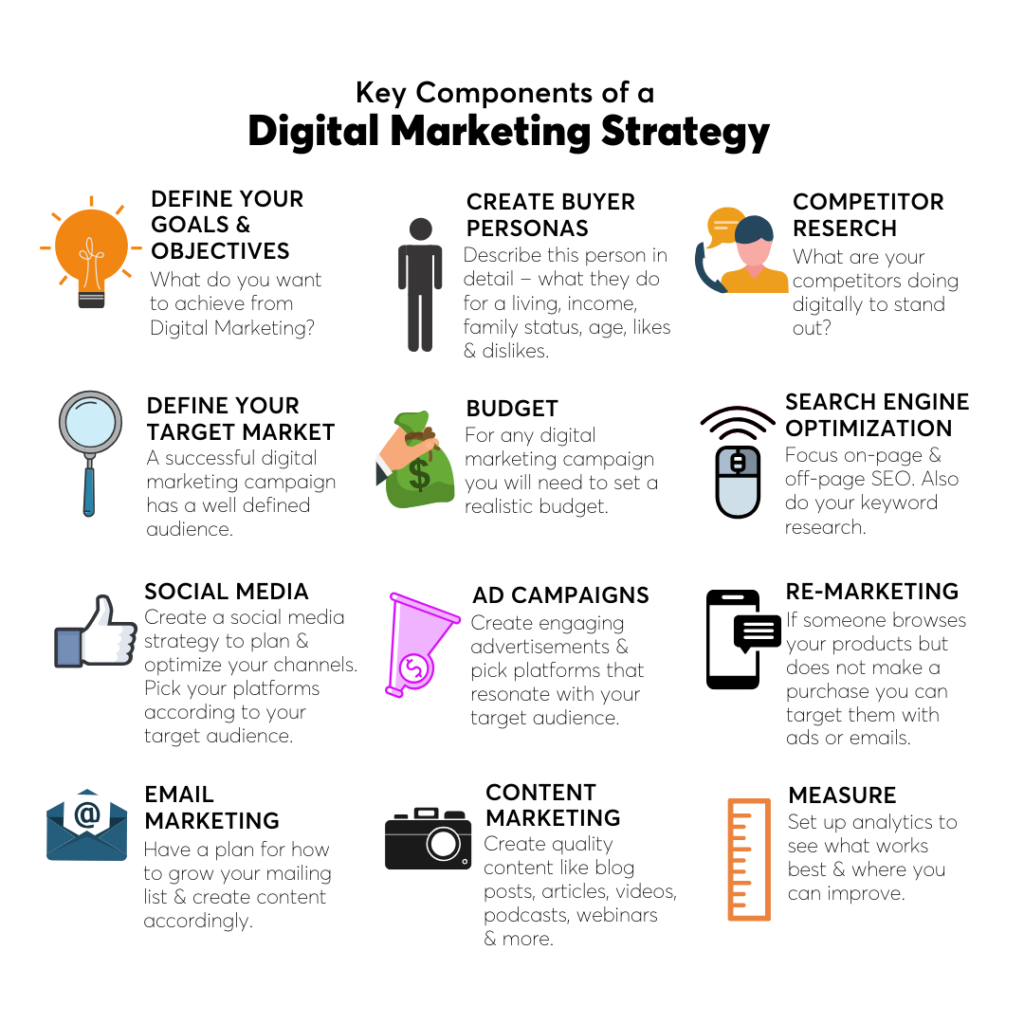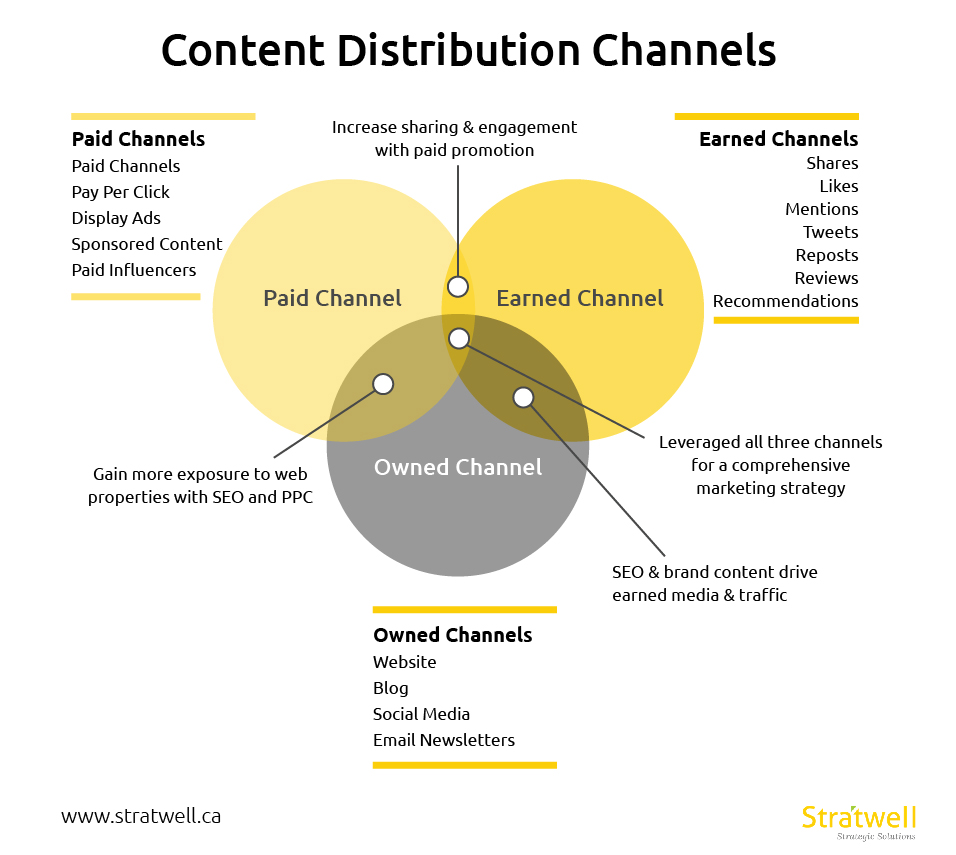In today’s competitive landscape, establishing a formidable online presence is imperative for businesses of all sizes. A killer digital marketing strategy serves as the cornerstone for reaching and engaging with the right audience effectively. Let’s delve into the key steps and components necessary to craft a robust digital marketing strategy that propels your brand towards success.
Table of contents
- Digital Marketing Strategy
- Understanding Your Target Audience
- Setting Clear Objectives and Goals
- Choosing the Right Digital Channels For Marketing
- Content Creation and Distribution Strategy
- Content Creation in Digital Marketing:
- Distribution Strategy:
- Implementing SEO Strategies
- Utilizing Social Media Marketing Effectively
- Measuring and Analyzing Results
- Adjusting and Improving Marketing Strategy
- Conclusion
- FAQ’s
Digital Marketing Strategy
A robust Killer digital marketing strategy isn’t just an option; it’s a necessity. It forms the blueprint guiding businesses to connect, engage, and convert their target audience in the online realm. Embracing the digital landscape’s dynamism, a comprehensive strategy lays the foundation for sustainable growth and visibility.

Understanding Your Target Audience
One cannot overemphasize the significance of understanding the audience. Conducting meticulous market research and building accurate buyer personas are pivotal in grasping your audience’s needs, preferences, pain points, and behaviors.
Setting Clear Objectives and Goals
Goals serve as guiding lights. When crafting a killer digital marketing strategy, defining Specific, Measurable, Achievable, Relevant, and Time-bound (SMART) objectives ensures clarity and direction. These goals should seamlessly align with broader business objectives.
Choosing the Right Digital Channels For Marketing
Diving into the digital landscape demands a discerning eye. Each channel possesses unique characteristics and audience demographics. Strategically selecting the right mix of channels aligns with your audience and goals, amplifying the impact of your efforts.
Content Creation and Distribution Strategy
Compelling content reigns supreme in the digital realm. Crafting valuable, engaging content and devising a robust distribution plan ensures maximum reach and resonance across chosen channels.

Content Creation in Digital Marketing:
Audience Understanding:
Begin by thoroughly understanding your target audience – their demographics, interests, pain points, and preferences to Create a Killer Digital Marketing Strategy.
Content Ideation:
- Brainstorm diverse content ideas relevant to your audience’s needs and preferences. This can include blog posts, videos, infographics, podcasts, etc.
Quality and Originality:
- Ensure your content is high-quality, original, and offers unique value. It should solve problems or entertain in a way that distinguishes it from competitors.
Distribution Strategy:
Platform Selection:
- Choose platforms where your audience is most active. It could be social media channels like Instagram, LinkedIn, Twitter, or content-sharing platforms like YouTube, Medium, or podcasts platforms.
Optimized Publishing:
- Tailor content for each platform to maximize its impact. For instance, short, catchy captions for Instagram, professional content for LinkedIn, etc.
SEO and Keywords:
- Optimize your content for search engines with relevant keywords to enhance visibility and attract organic traffic.
Implementing SEO Strategies
Search Engine Optimization (SEO) stands as the bedrock of online visibility. Embracing both on-page and off-page SEO tactics elevates your content’s discoverability, augmenting your brand’s online footprint.
| SEO Strategies | On-Page | Off-Page |
| Keyword Optimization | Targeting specific keywords in content | Building quality backlinks from reputable sites |
| Quality Content Creation | Crafting engaging, relevant content | Guest blogging and content sharing |
| Title Tags & Meta Descriptions | Optimizing for search and user experience | Leveraging social media for brand exposure |
| Internal Linking | Creating a network of interlinked pages | Influencer collaborations and partnerships |
| Site Structure & Navigation | Organizing content for easy access | Submitting to directories and listings |
| Page Speed Optimization | Enhancing loading times for better user experience | Participating in forums and discussions |
Utilizing Social Media Marketing Effectively
Social media platforms serve as thriving hubs for engagement. Leveraging the strengths of each platform and creating a cohesive content calendar fosters audience interaction and brand advocacy.
Measuring and Analyzing Results
Key Performance Indicators (KPIs) serve as the compass guiding strategy refinement. Utilizing tools to measure and analyze results against predefined KPIs aids in gauging the strategy’s effectiveness.

Adjusting and Improving Marketing Strategy
Flexibility in the digital realm is paramount. Embrace iterative improvements based on analytics and feedback, allowing your strategy to evolve and stay attuned to changing market dynamics.
Conclusion
In essence, a killer digital marketing strategy amalgamates understanding, strategic planning, creativity, and adaptability. It serves as the catalyst propelling businesses toward their digital objectives, forging lasting connections with their audience, and ensuring sustained growth in the ever-evolving online landscape.
Readmore : Benefits of Social Media for Your Business Growth
FAQ’s
Understanding the audience aids in crafting tailored content and channel selection, ensuring resonant engagement, and higher conversion rates.
Utilize Key Performance Indicators (KPIs) aligned with goals, employing analytics tools to track metrics like website traffic, conversion rates, and social media engagement.
Choose platforms based on your audience demographics and content type; for instance, visual content might excel on Instagram, while professional content suits LinkedIn.
Flexibility enables adaptation to market shifts, incorporating feedback and analytics to refine strategies for better audience resonance and sustained growth.




